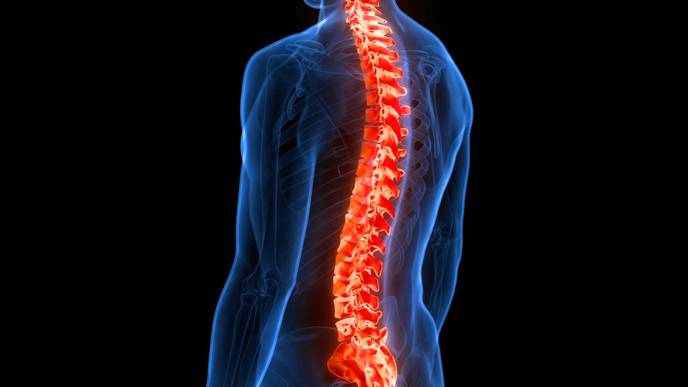Type 2 Diabetes Alters the Behavior of Discs in the Vertebral Column

02/14/2024
Type 2 diabetes alters the behavior of discs in the vertebral column, making them stiffer, and also causes the discs to change shape earlier than normal. As a result, the disc’s ability to withstand pressure is compromised. This is one of the findings of a new study in rodents from a team of engineers and physicians from the University of California San Diego, UC Davis, UCSF and the University of Utah.
Low back pain is a major cause of disability, often associated with intervertebral disc degeneration. People with Type 2 diabetes face a higher risk of low back pain and disc-related issues. Yet the precise mechanisms of disc degeneration remain unclear.
Investigating the biomechanical properties of the intervertebral disc is crucial for understanding the disease and developing effective strategies for managing low back pain. The research team was co-led by Claire Acevedo, a faculty member in the Department of Mechanical and Aerospace Engineering at the University of California San Diego, and Aaron Fields, faculty in the Department of Orthopaedic Surgery at UC San Francisco.
“These findings provide novel insight into the potential mechanisms underlying diabetes-related disc tissue damage and may inform the development of preventative and therapeutic strategies for this debilitating condition,” the researchers write.
The study emphasizes that nanoscale deformation mechanisms of collagen fibrils accommodate compressive loading of the intervertebral disc. In the context of type 2 diabetes, these mechanisms are compromised, resulting in collagen embrittlement. These findings provide novel insight into the potential mechanisms underlying diabetes-related disc tissue damage and may inform the development of preventative and therapeutic strategies for this debilitating condition.
Researchers employed synchrotron small-angle x-ray scattering (SAXS), an experimental technique that looks at collagen fibril deformation and orientation at the nanoscale. They wanted to explore how alterations in collagen behavior contribute to changes in the disc's ability to withstand compression.
They compared discs from healthy rats to those from rats with Type 2 diabetes (UC Davis rat model). The healthy rats showed that collagen fibrils rotate and stretch when discs are compressed, allowing the disc to dissipate energy effectively.
“In diabetic rats, the way vertebral discs dissipate energy under compression is significantly impaired: diabetes reduces the rotation and stretching of collagen fibrils, indicating a compromised ability to handle pressure,” the researchers write.
Further analysis showed that the discs from diabetic rats exhibited a stiffening of collagen fibrils, with a higher concentration of non-enzymatic cross-links. This increase in collagen cross-linking, induced by hyperglycemia, limited plastic deformations via fibrillar sliding. These findings highlight that fibril reorientation, straightening, stretching, and sliding are crucial mechanisms facilitating whole-disc compression. Type 2 diabetes disrupts these efficient deformation mechanisms, leading to altered whole-disc biomechanics and a more brittle (low-energy) behavior.
The team published their findings in the December 2023 issue of PNAS Nexus.

Facebook Comments